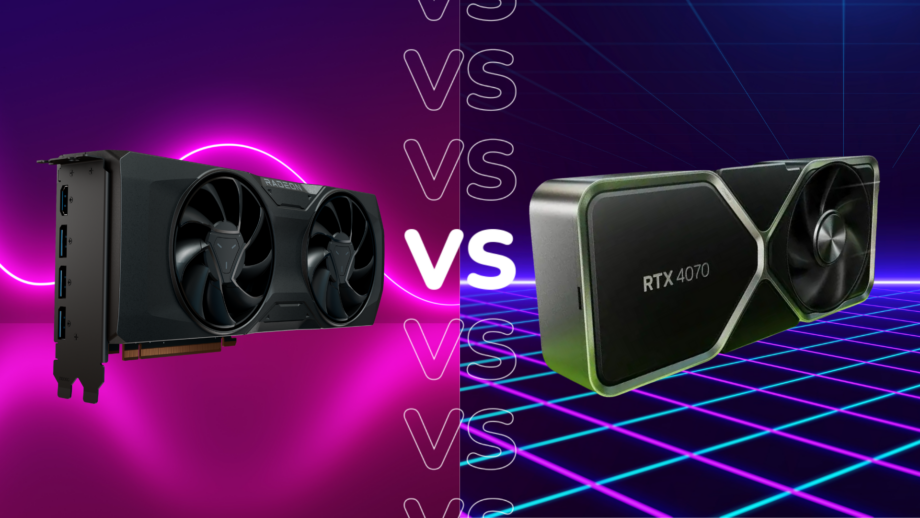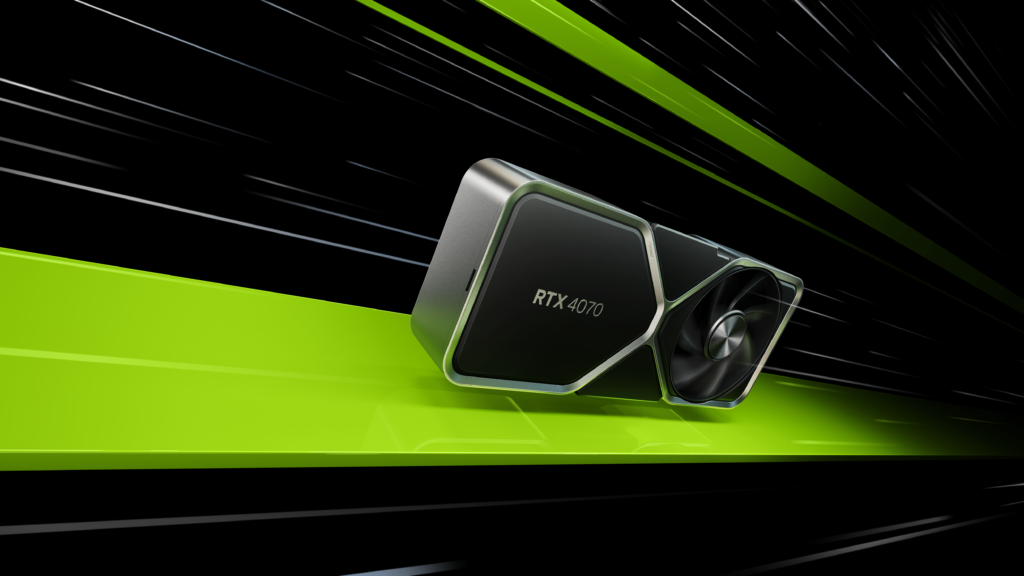AMD Radeon RX 7800 XT vs Nvidia RTX 4070: Which mid-range card is best?

AMD has just announced two new graphics cards – the RX 7700 XT and RX 7800 XT – which will launch on the 6th of September 2023.
These new cards are both built for Quad HD (1440p) gaming and come with all the features you would expect from a next-generation card, including support for the long-awaited FSR 3 upscaling software.
We wanted to take a closer look and see how the RX 7800 XT compares to its main rival, the Nvidia RTX 4070. Keep reading to find out all the main differences between these cards so you can decide which GPU is best suited for your needs.
DLSS vs FSR
Both Nvidia and AMD have methods of upscaling supported games. For Nvidia, it’s DLSS, while AMD uses FSR. DLSS – which is now in its 3.5 iteration – uses AI to create additional frames within games that reduces the workload of the GPU in order to see a massive uptick to the frame rate. The RTX 4070 uses DLSS 3.5 and can bring big performance boosts to compatible games, which include the likes of Hitman 3, Cyberpunk 2077, F1 22 and many others.
AMD instead uses FSR technology, also known as FidelityFX Super Resolution. FSR has been in its second incarnation for many years now but AMD has finally announced that FSR 3 will be launching soon, likely at a similar time to these new graphics cards. We can’t make any claims on how FSR 3 will affect game performance until we test it out for ourselves, but AMD claims that it will provide high, fluid frame rates and reduce issues like lagging.

Better performance on RX 7800 XT according to AMD
AMD has already done the work of testing the RX 7800 XT against the RTX 4070 in a multitude of games. Since these tests were conducted by AMD, you should take these results with a pinch of salt, but they give a decent indication of what this card will be capable of. These tests were all run at 1440p resolution with the max graphical settings enabled.
The RX 7800 XT managed to gain a 23% performance boost in Call of Duty: Modern Warfare 2 (2022) over the RTX 4070 and a 15% increase in Hogwarts Legacy. The RTX 4070 then saw a 9% decrease in performance in Dying Light 2 with ray tracing enabled, and an 18% drop in Doom Eternal. Having ray tracing activated will have an impact on the performance of each card – especially when the respective upscaling technology isn’t enabled.
While these results should not be taken as gospel, it does suggest that the RX 7800 XT will be more than capable of running triple-A titles in Quad HD at a high frame rate, which is great news for gamers loyal to AMD hardware.

More VRAM on the RX 7800 XT
The AMD Radeon RX 7800 XT comes with a staggering 16GB of VRAM. Having 16GB of VRAM means that the RX 7800 XT can temporarily store up to 16GB worth of memory to then use to render imagery. In theory, more video memory allows the GPU to display more complex imagery at a faster rate, making it essential for gamers and content creators alike.
On the other hand, the RTX 4070 comes with 12GB of video memory, giving the AMD card a slight upper hand. Until we get this card in for testing we can’t make any concrete claims on whether the RX 7800 XT will perform better due to its higher video memory, but the AMD card certainly looks promising on paper.








